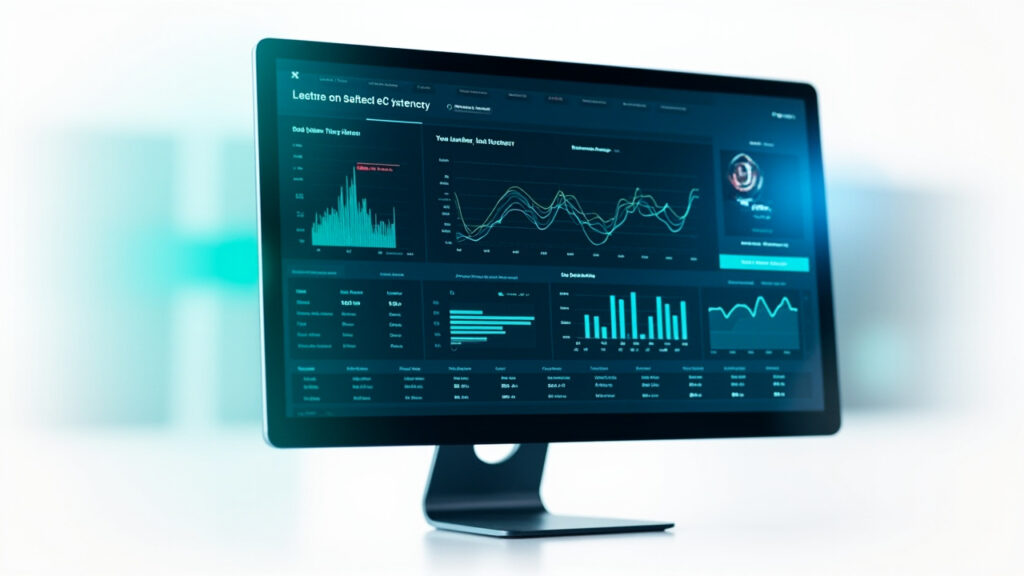In a world dominated by digital interactions, the performance of software applications plays a pivotal role in user satisfaction and business success. Lag, or the delay between a user’s action and the response from the application, can be a critical factor that turns potential success into a frustrating failure. This blog post delves deep into the causes, impacts, and solutions for lag in digital applications, providing readers with comprehensive insights and actionable strategies to mitigate this pervasive issue.
Understanding the implications of lag is essential, not only for developers and quality assurance professionals but also for business leaders seeking to enhance customer experiences and operational efficiency. By the end of this article, you’ll be equipped with the knowledge to identify, analyze, and effectively reduce lag using advanced tools like GenQE and other industry-leading practices.
Understanding Lag: More Than Just a Delay

Lag can manifest in various forms across different platforms, each affecting user experience and system performance in significant ways. Here, we’ll explore what constitutes lag, the different types it includes, and why it matters more than you might think.
Types of Lag
Lag is often categorized into several types, including network lag, input lag, processing lag, and rendering lag. Each type affects the user experience in unique ways, depending on the nature of the interaction and the underlying technology.
- **Network Lag**: Delays in data transmission over a network.
- **Input Lag**: The delay between an input action (like a keystroke or mouse click) and the software response.
- **Processing Lag**: The time it takes for an application to process an input and generate an output.
- **Rendering Lag**: Delays in visual feedback appearing on the screen after processing inputs.
Understanding these distinctions is crucial for diagnosing and addressing the right type of lag in specific scenarios.
Why Lag Matters
In environments where real-time interaction is crucial, such as in online gaming, video conferencing, or real-time data analysis, high levels of lag can render a system unusable. In less critical applications, it still affects user satisfaction and can lead to increased user error, reduced efficiency, and ultimately, loss of revenue.
The Root Causes of Lag

Identifying the underlying causes of lag is the first step in mitigating its effects. This section explores common sources of lag and how they can be systematically addressed.
Hardware Limitations
Older or inadequate hardware can struggle to keep up with the demands of modern software, leading to processing and rendering lag. Upgrading hardware or optimizing software to be more efficient can help reduce these issues.
Software and Code Inefficiencies
Poorly optimized code or bloated software architectures can lead to significant processing delays. Performance profiling and code optimization are essential tools in a developer’s arsenal to combat this type of lag.
Network Issues
Network lag is often caused by poor internet connections or suboptimal routing. Solutions include optimizing server locations, using content delivery networks (CDNs), and improving data compression techniques.
External Factors
Other factors, such as multiple applications running simultaneously or operating system overheads, can also contribute to lag. Effective system management and resource allocation strategies are vital in these cases.
Measuring and Diagnosing Lag

To effectively tackle lag, it must first be measured and diagnosed accurately. This section covers the tools and methodologies used for lag analysis.
Performance Metrics
Key performance indicators (KPIs) such as response time, load time, and frame rate are crucial for measuring lag. Tools like profilers and monitoring software can help gather these metrics.
Real User Monitoring (RUM)
RUM tools collect data on user interactions in real-time, providing insights into actual user experiences and identifying unexpected lag issues.
Synthetic Monitoring
Unlike RUM, synthetic monitoring uses bots to simulate user interactions, helping identify potential lag in controlled environments before software goes live.
Innovative Solutions to Reduce Lag

With a proper understanding of lag and its causes, we can explore advanced solutions designed to minimize its impact. This section introduces cutting-edge technologies and methodologies that help reduce lag effectively.
Optimized Networking Solutions
Implementing faster networking protocols and more efficient routing algorithms can dramatically reduce network lag. Techniques such as edge computing also bring data processing closer to the end-user, minimizing delay.
Code Optimization Techniques
Refactoring code to be more efficient and adopting newer, faster programming languages can help reduce processing and rendering lag. Additionally, parallel processing and multithreading can be used to enhance performance.
Using AI for Enhanced Performance
AI tools like GenQE can play a pivotal role in identifying inefficiencies and predicting potential lag sources. By automating test case generation and prioritizing critical areas, GenQE helps maintain smooth operation while reducing the manual effort involved in testing.
GenQE: A Tool for the Future

As software environments become increasingly complex, traditional testing methods often fall short. GenQE leverages AI to enhance test automation and efficiency, offering a robust solution for modern needs.
How GenQE Addresses Lag
By automating the creation and execution of test cases, GenQE ensures comprehensive coverage and identifies potential lag sources early in the development cycle. Its AI-driven defect detection also helps in pinpointing the exact locations of inefficiencies that could lead to lag.
Integration with DevOps
GenQE seamlessly integrates with existing CI/CD pipelines, ensuring that lag detection and mitigation are continuous and automated. This integration helps maintain a consistent user experience by preventing lag from affecting live systems.
Conclusion: Towards a Smoother Digital Future

Lag is an unavoidable aspect of digital systems, but with the right tools and strategies, its impact can be minimized. Understanding its causes, measuring its effects, and implementing advanced solutions like GenQE are crucial steps towards creating smoother, more responsive digital experiences.
As we move forward, the role of AI in quality assurance will only grow, making platforms like GenQE invaluable for developers and businesses aiming to deliver superior digital products. Embracing these technologies today can set you apart and prepare you for the demands of tomorrow’s digital landscape.
Explore how GenQE can transform your approach to software quality and help you build lag-free applications that users love. Dive into the future of digital experiences, where speed and quality go hand in hand.
Discover More Innovative Solutions
Want to learn more about the tools and technologies discussed in this article? Explore how these innovations can be tailored to your specific needs and workflow requirements.
Our team of experts is available to answer your questions and provide personalized insights into how modern solutions like GenQE can address your specific challenges.